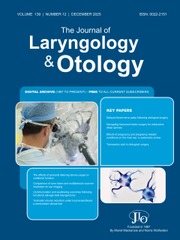No CrossRef data available.
Article contents
Comparison of cone beam and multidetector scanner irradiation for ear imaging
Published online by Cambridge University Press: 05 September 2025
Abstract
Temporal bone computed tomography delivers a relatively high radiation dose. Cone beam computed tomography could be a promising alternative, offering good performance with reduced radiation exposure. This study aimed to compare the irradiation during temporal bone imaging using computed tomography versus cone beam computed tomography.
We conducted a single-centre prospective study evaluating dosimetric data collected from patients undergoing temporal bone imaging via computed tomography or cone beam computed tomography. Absorbed doses (milligrays) were measured using mini-dosimeters placed on key anatomical sites: eyes, ears, lower neck and pubic region, and compared between the two imaging modalities.
CBCT significantly reduced radiation, with absorbed doses being two to six times lower than those observed with conventional computed tomography, depending on the measured sites.
Our findings align with existing literature, confirming the reduced irradiation with cone beam computed tomography in ear imaging. Further studies are warranted to evaluate image quality relative to radiation dose between the two techniques.
Information
- Type
- Main Article
- Information
- Copyright
- © The Author(s), 2025. Published by Cambridge University Press on behalf of J.L.O. (1984) LIMITED.
Footnotes
Anne-Line Mutschler takes responsibility for the integrity of the content of the paper

